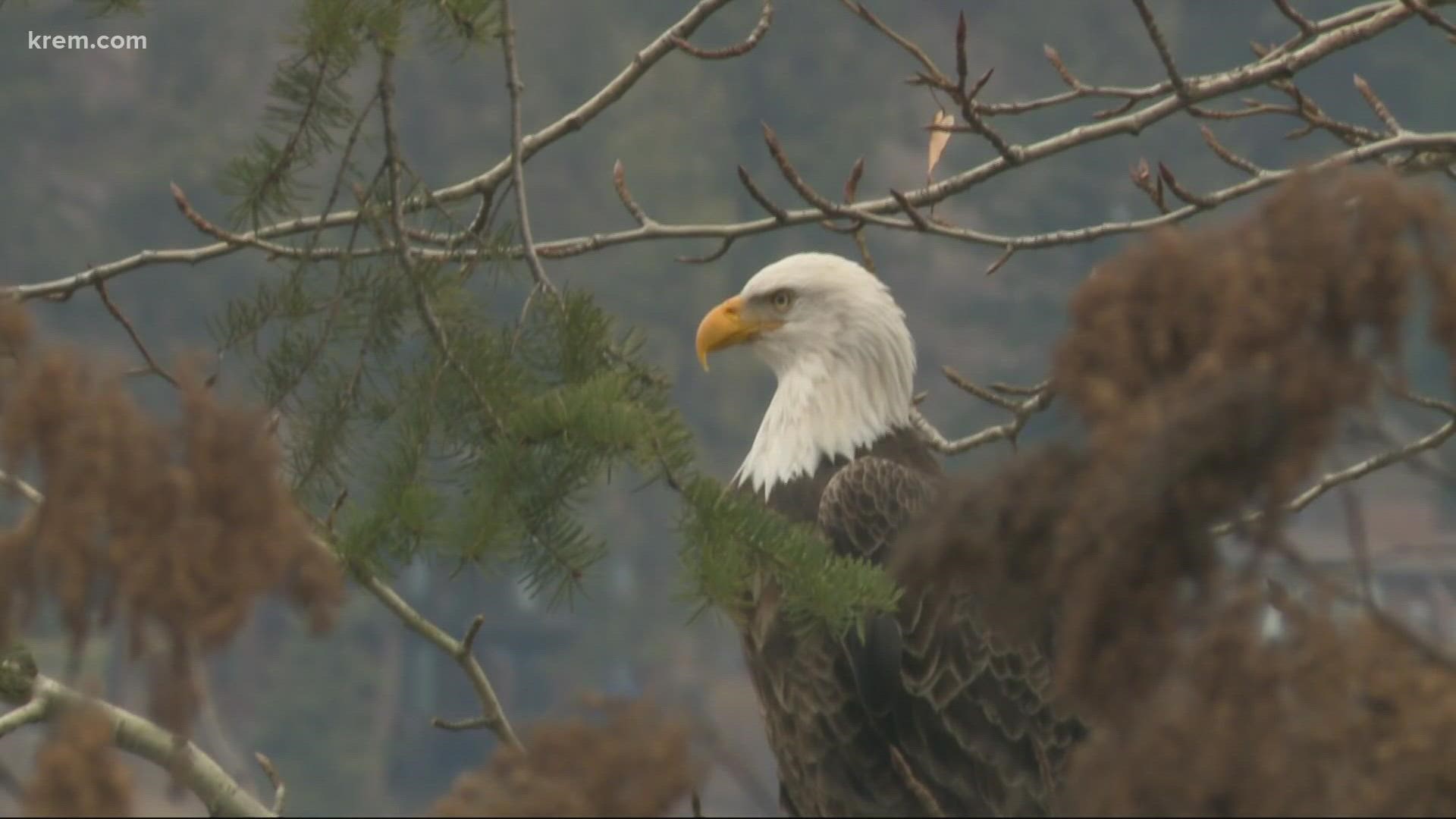COEUR D'ALENE, Idaho — They're back.
Resident Paul Webster said that on Sunday he counted 10 bald eagles — eight mature, two juveniles — at Higgens Point as he photographed the majestic creatures. It was the first day more than one eagle was spotted, as reported by KREM 2 news partner the Coeur d'Alene Press.
"Today started eagle season for me!" he wrote.
The eagles generally reach their peak in late November. It continues until about mid-December, but the number of returning eagles varies from year to year.
According to the Bureau of Land Management, which conducts weekly counting of the eagles, there were 41 bald eagles on Nov. 12, 2020.
BLM reported a high of 383 eagles on Dec. 20, 2017. On Nov. 29, 2018, the count reached 343, while on Dec. 2, 2019, the count totaled 259 eagles.
They come to feed on spawning kokanee and often put on aerial shows as they swoop down to snag a fish from the surface of Lake Coeur d'Alene. Eagles will sometimes engage in aerial combat over a fish.
Lake Coeur d'Alene Cruises will begin offering eagle-watching cruises in early December that will continue until just after the New Year.
"For an up-close look, take one of the Lake Coeur d’Alene Cruise Boats to Wolf Lodge Bay," says the Lake Coeur d'Alene Cruises website. "It’s an awe-inspiring sight to see these magnificent birds in the wild from the comfort of a cruise boat."
BLM Eagle-watching tips
• Suggested viewing areas: Higgens Point, Mineral Ridge Boat Ramp, Mineral Ridge Trailhead
• To avoid disturbing the birds, use binoculars or spotting scopes so you may view details without the need to be close. Vehicles disturb eagles less than walking people do, so parking safely off the road and viewing with binoculars is a good method. Watch the bird's body language. If you're too close, it will appear uneasy.
• Feeding activity begins upon arrival at the lake and continues throughout the early morning. Feeding slows at mid-day, then resumes late afternoon before the flight back to the roost.
The Coeur d'Alene Press is a KREM 2 news partner. For more from our news partner, click here.

